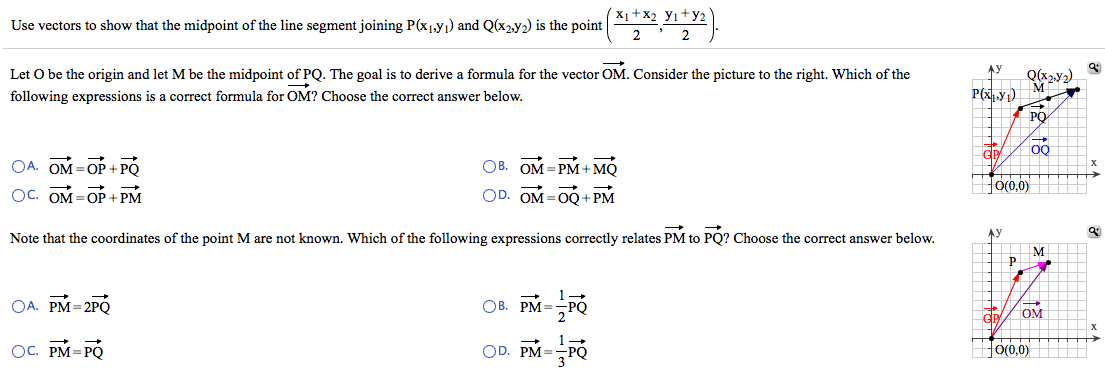MATH 1022 Chapter : Section 10 4

1
10.4 Vectors
OBJECTIVE 1: Understanding the Geometric Representation of a Vector
Geometric Representation of a Vector
A vector v can be represented geometrically as a directed line segment in a plane
having an initial point P and a terminal point Q.
The vector can be denoted as the boldface letter v,
PQ
, or .
The Magnitude of a Vector Represented Geometrically
The magnitude of a vector v is the distance between the initial
point and the terminal point and is denoted by
v
. If the initial point has
coordinates
( )
11
,P x y
and the terminal point has coordinates
( )
22
,Q x y
, then
v
( ) ( )
22
2 1 2 1
x x y y= − + −
.
Ex. 1: Determine the magnitude of the vector v .
v
(-4, -2)
(2, 3)
x
y

2
OBJECTIVE 2: Understanding Operations on Vectors Represented Geometrically
SCALAR MULTIPLICATION
A quantity described using only magnitude is called a scalar quantity. When working in the context of
vectors, real numbers are called scalars. Multiplying a vector by a scalar is called scalar multiplication.
Parallel Vectors
Two vectors u and v are parallel vectors if there is a nonzero scalar k
such that
k=uv
.
Ex. 2: Use the given vector v, to draw 2v.
v

3
VECTOR ADDITION
The sum of u and v is denoted by u
+
v and is called the resultant vector. To add the two vectors
geometrically, we start by drawing an exact copy of vector v so that the initial point of v coincides with the
terminal point of vector u. The resultant vector u
+
v is the vector that shares the initial point with u extending
to and sharing the terminal point with v. Vector addition is sometimes referred to as the triangle law.
THE PARALLELOGRAM LAW FOR VECTOR ADDITION
Another way to illustrate vector addition is to think of the resultant vector u
+
v as the diagonal of a
parallelogram. We can complete a parallelogram by drawing copies of vectors u and v on opposite sides of
each other. We can represent the resultant vector u
+
v as the diagonal of a parallelogram. This is known as the
parallelogram law for vector addition. The parallelogram law is also a nice illustration to show that vector
addition is commutative, which means that u
+
v = u
+
v.
Document Summary
Objective 1: understanding the geometric representation of a vector. A vector v can be represented geometrically as a directed line segment in a plane having an initial point p and a terminal point q. The vector can be denoted as the boldface letter v, pq , or. The magnitude of a vector v is the distance between the initial point and the terminal point and is denoted by v . If the initial point has coordinates v x. P x y and the terminal point has coordinates. 1: determine the magnitude of the vector v . y v (2, 3) x (-4, -2) Objective 2: understanding operations on vectors represented geometrically. A quantity described using only magnitude is called a scalar quantity. When working in the context of vectors, real numbers are called scalars. Multiplying a vector by a scalar is called scalar multiplication.






